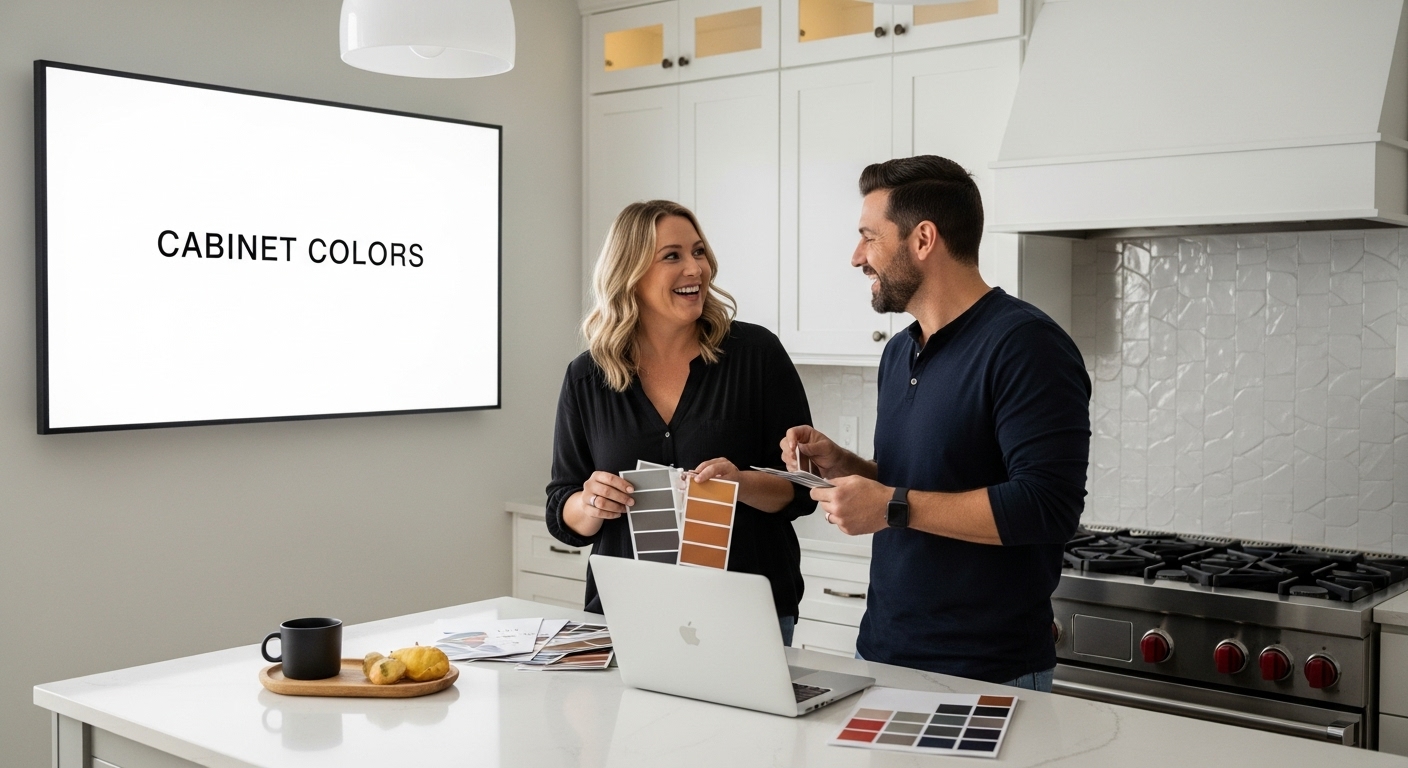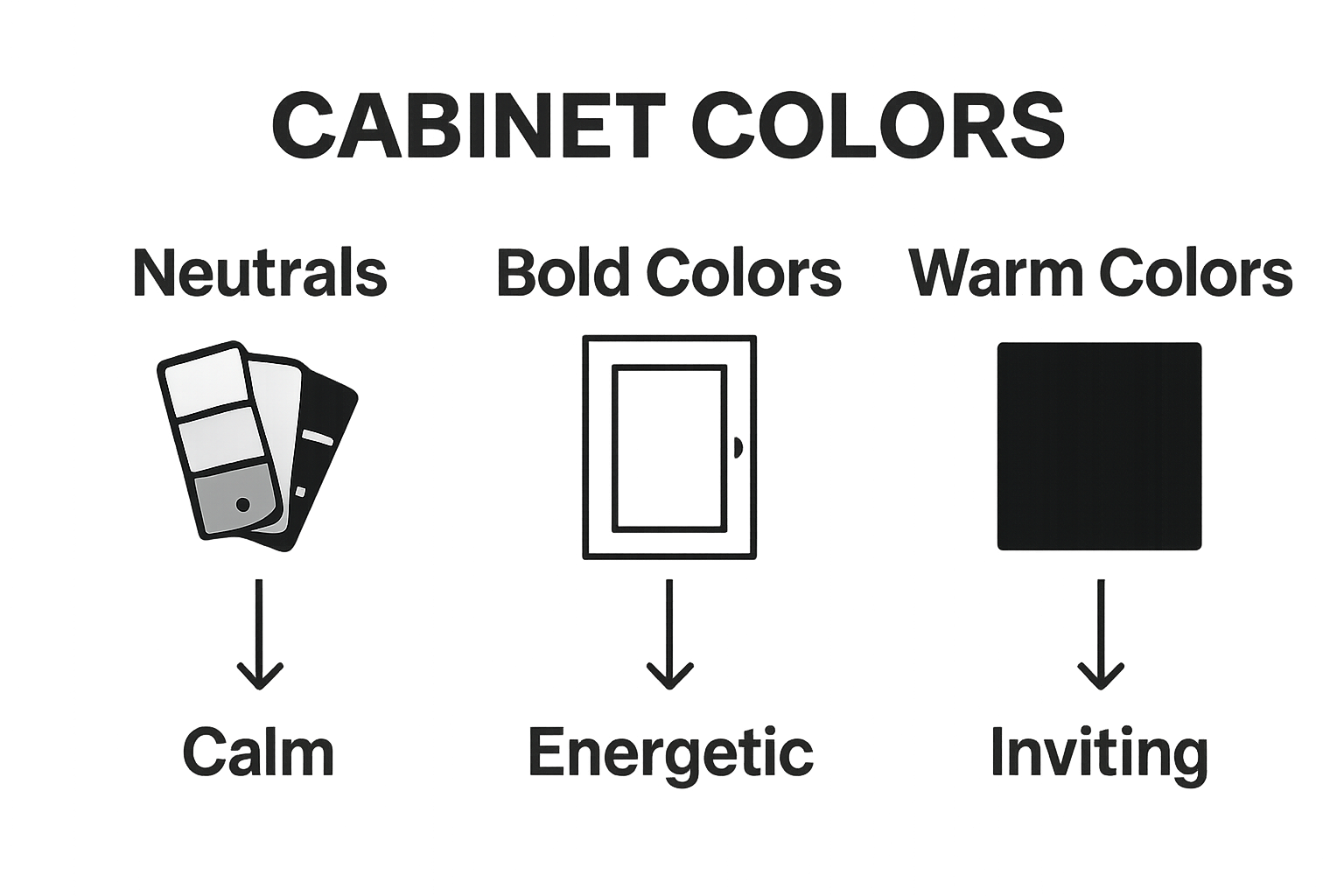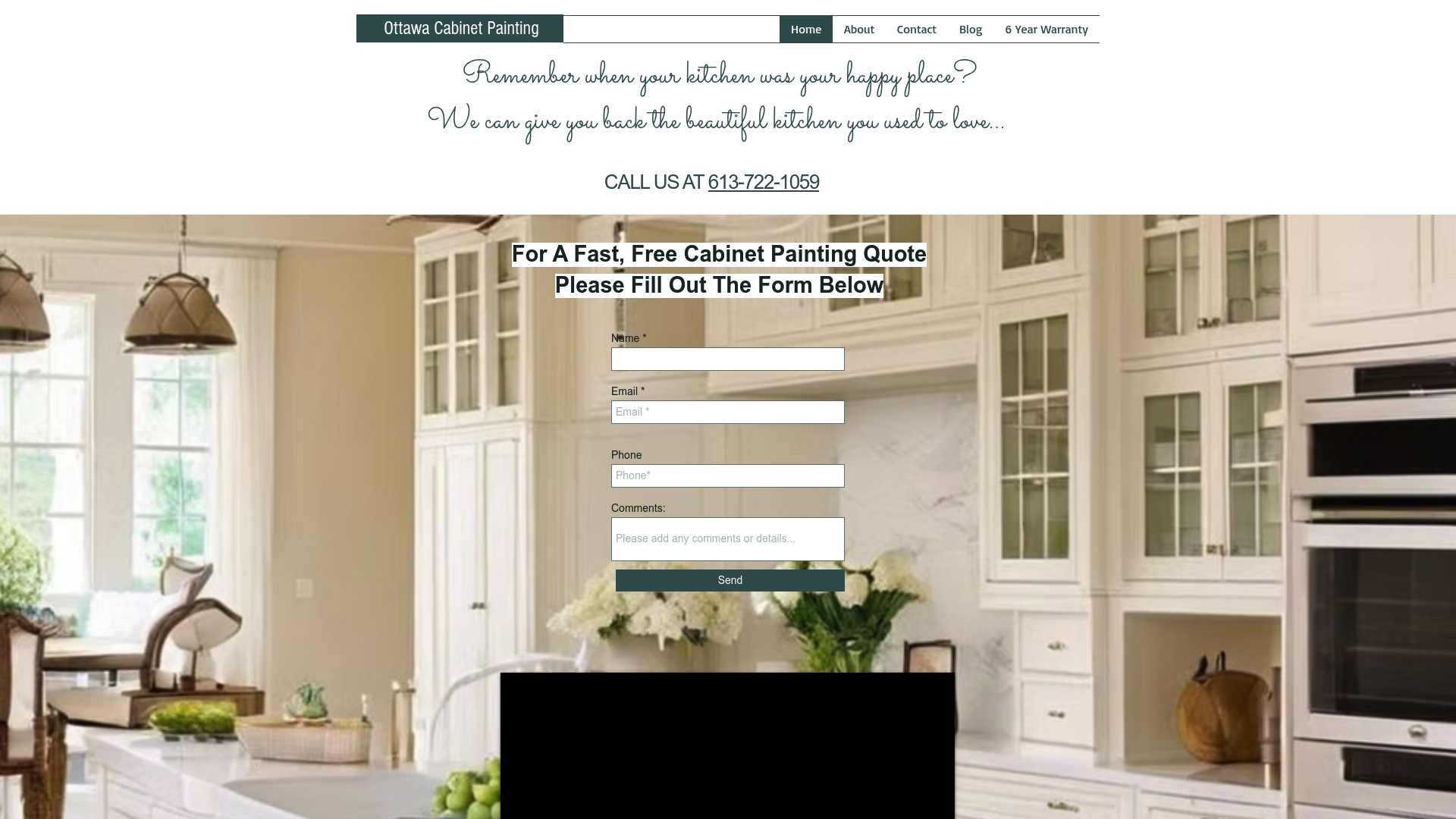Understanding Choosing Cabinet Colors for Your Home
- demoore5506
- Sep 19
- 9 min read

Everyone loves a stylish kitchen, and cabinet colors have a bigger impact than most people realize. In fact, research shows that a strategic cabinet color can boost your home’s resale potential and directly shape buyers’ first impressions. Sounds like a lot of pressure for a coat of paint, right? Most people focus on walls or appliances, but it is actually your cabinet color that sets the mood and creates emotional resonance in your kitchen. The color you pick will transform how you and your guests feel every time you walk in.
Table of Contents
Quick Summary
Takeaway | Explanation |
Choose colors beyond personal preference | Consider color psychology and how it affects emotions and mood in your kitchen design. |
Neutral palettes offer long-term appeal | Neutral colors harmonize with various design elements and adapt to changing trends, making them versatile choices. |
Evaluate light and space when selecting colors | Natural and artificial light can alter the perception of color, impacting how they look and feel in your kitchen. |
Bold colors can add personality | Use bold shades to create focal points and express personal style while ensuring they harmonize with other elements. |
Think about resale value | Strategic cabinet color choices can enhance home value and attract potential buyers by creating an inviting appearance. |
What are Cabinet Colors and Their Importance?
Choosing cabinet colors is more than a simple aesthetic decision. It represents a strategic approach to transforming your kitchen’s visual identity and emotional atmosphere. Colors are powerful design elements that communicate mood, style, and personal expression while significantly impacting your home’s overall ambiance.
The Psychology of Color in Kitchen Design
Colors interact with human psychology in profound ways. Research from the St. Louis Institute of Art and Design highlights that color theory plays a critical role in creating specific emotional responses within interior spaces. In kitchen design, cabinet colors serve as a foundational element that influences how people feel and interact within the space.
Key psychological impacts of cabinet colors include:

Promoting feelings of calmness and serenity
Stimulating appetite and energy
Creating visual spaciousness or intimacy
Reflecting personal style and emotional preferences
Strategic Color Selection Considerations
Selecting cabinet colors requires careful consideration beyond personal preference. Consumer Reports recommends establishing a coordinated color scheme that harmonizes with existing elements like countertops, flooring, and wall colors. Neutral color palettes offer versatility and long-term appeal, while bold color choices can make dramatic statements.
When choosing cabinet colors, homeowners should evaluate factors such as:
Natural lighting conditions in the kitchen
Overall home design aesthetic
Potential resale value implications
Personal emotional connection to specific colors
By understanding cabinet colors as more than surface decoration, homeowners can transform their kitchens into personalized, emotionally resonant spaces that reflect individual style and enhance daily living experiences.
Learn more about timeless kitchen color schemes to inspire your design journey.
Why Choosing the Right Cabinet Color Matters
The color of your kitchen cabinets is far more than a superficial design choice. It represents a critical decision that impacts your home’s aesthetic appeal, emotional atmosphere, and potential market value. Your cabinet color can transform an ordinary kitchen into an extraordinary living space that resonates with personal style and functional requirements.
Impact on Home Value and Perception
Research from Canadian home design experts reveals that strategic cabinet color selection can significantly influence a home’s resale potential. Potential buyers form immediate impressions based on visual elements, and cabinet colors play a pivotal role in creating an inviting, well-maintained aesthetic.
Key factors that underscore the importance of cabinet color include:
Creating visual harmony with existing home design
Establishing a sense of spaciousness or intimacy
Reflecting current design trends
Communicating home maintenance and care
Psychological and Emotional Considerations
Beyond aesthetic and financial implications, cabinet colors profoundly impact psychological well-being. Color psychology research demonstrates that colors can evoke specific emotional responses, influencing mood and daily experience within your living space.
Neutral tones like soft whites and warm grays provide a calming backdrop, while bold colors can inject energy and personality into your kitchen. The right color choice transforms your kitchen from a mere functional space to an emotional sanctuary where memories are created.
The table below compares common cabinet color categories by their psychological and design impacts, helping you evaluate which aligns best with your kitchen goals.
Cabinet Color Category | Psychological Effect | Design Impact | Example Tones |
Neutral Tones | Calming, timeless | Versatile, suits various styles | Soft whites, warm grays |
Bold Colors | Energizing, expressive | Creates focal points, adds personality | Navy blue, deep burgundy |
Light Shades | Spaciousness, cleanliness | Makes rooms feel larger and brighter | Pale gray, crisp white |
Dark Shades | Sophisticated, intimate | Hides wear, creates cozy feel | Forest green, rich navy |
Warm Colors | Inviting, stimulates conversation | Encourages social interaction | Warm yellows, taupe |
Cool Colors | Serene, tranquil | Connects with nature, soothes emotions | Soft blue, deep green |
Consider these emotional impacts when selecting cabinet colors:
Soft blues promote tranquility
Warm yellows stimulate conversation
Deep greens connect with natural elements
Crisp whites create a sense of cleanliness
By carefully selecting cabinet colors, homeowners can craft spaces that not only look beautiful but also feel emotionally resonant. Learn more about kitchen color trends to inspire your design journey and create a kitchen that truly feels like home.
How Cabinet Colors Influence Kitchen Design
Cabinet colors are far more than decorative elements. They serve as foundational design components that dramatically shape the visual narrative, functional perception, and emotional experience of your kitchen space. Understanding their transformative power requires exploring how color interacts with architectural elements, lighting, and human perception.
Color as a Spatial Design Tool
Research from earthy design trends reveals that cabinet colors strategically manipulate spatial perception. Lighter colors like soft whites and pale grays can create an illusion of expansiveness, making smaller kitchens feel more open and airy. Conversely, deeper tones like rich navy or forest green can create intimate, sophisticated environments that feel deliberately compact and cozy.
Key spatial design considerations include:
Reflecting and absorbing light differently
Creating visual depth and dimension
Establishing visual boundaries
Complementing architectural features
Harmonizing Design Elements
Cabinet colors act as a critical bridge connecting various design elements within your kitchen. They interact dynamically with countertops, backsplashes, flooring, and appliances, creating a cohesive visual language. Neutral cabinet colors provide flexibility, while bold color choices can serve as dramatic focal points that anchor the entire design.
Consider these harmonization strategies:
Matching cabinet colors with existing architectural materials
Creating intentional color contrasts
Balancing warm and cool tones
Selecting colors that enhance natural lighting
The intentional selection of cabinet colors transforms kitchens from mere cooking spaces into personalized design statements. Explore modern kitchen cabinet trends to understand how contemporary design perspectives are reshaping our approach to color selection and kitchen aesthetics.
Key Factors in Selecting Cabinet Colors
Selecting the perfect cabinet color involves a complex interplay of design principles, personal aesthetic, and practical considerations. It is not merely about picking a shade that looks appealing, but creating a harmonious environment that reflects your lifestyle, enhances your kitchen’s functionality, and maintains long-term visual appeal.
Architectural and Lighting Considerations
The architectural characteristics of your kitchen and its lighting play pivotal roles in color selection. Natural and artificial light dramatically transform how colors appear and feel throughout different times of the day. Lighter colors can amplify brightness and create an illusion of spaciousness, while deeper tones add depth and dramatic character.
Key architectural and lighting factors include:
Room size and ceiling height
Window placement and natural light exposure
Artificial lighting types and intensity
Existing color palette of adjacent spaces
Material and Texture Interactions
Cabinet colors must thoughtfully interact with surrounding materials and textures. Countertops, backsplashes, flooring, and appliances create a complex visual ecosystem where colors must communicate harmoniously. Neutral base colors provide flexibility, while accent colors can create dynamic visual interest.
Consider these material interaction strategies:
Complementing wood grain and material textures
Balancing cool and warm material tones
Creating intentional color contrasts
Ensuring visual cohesion across different surfaces
The nuanced process of selecting cabinet colors requires a holistic approach that balances aesthetic preferences with practical design principles. Discover modern farmhouse cabinet color inspirations to spark your creative vision and transform your kitchen into a personalized sanctuary.
Real-World Applications of Cabinet Color Choices
Cabinet color selection transcends theoretical design principles, manifesting in tangible ways that directly impact daily living experiences. The practical implementation of color choices reflects individual lifestyles, functional needs, and aesthetic preferences, transforming kitchens from mere cooking spaces into personalized sanctuaries.
Lifestyle and Functional Adaptations
Research from kitchen design trends highlights the emergence of bold, saturated colors like navy blue, forest green, and deep burgundy. These sophisticated hues are not just visual statements but practical solutions for different household dynamics. Dark colors offer practical benefits like concealing minor wear and tear, while lighter shades create an illusion of cleanliness and spaciousness.
Practical color applications include:
Managing visual maintenance in high-traffic family kitchens
Creating distinct zones within open-concept spaces
Reflecting personal design narratives
Adapting to changing lifestyle needs
Emotional and Psychological Environments
Cabinet colors function as powerful psychological tools that shape emotional experiences within kitchen spaces. They are not merely decorative elements but environmental architects that influence mood, energy, and interpersonal interactions. Warm tones can create inviting atmospheres that encourage conversation, while cool colors might promote a sense of calm and organization.
Consider these emotional design strategies:
Using colors to stimulate appetite and social interaction
Creating serene environments for stress reduction
Reflecting personal emotional landscapes
Balancing functional efficiency with emotional comfort
The art of selecting cabinet colors represents a nuanced dance between design theory and personal expression.
This table outlines the key practical and emotional strategies for applying cabinet colors as highlighted in the article, offering quick reference for how color choices support real-world kitchen needs.
Strategy Category | Application Example | Benefit |
Visual Maintenance | Dark colors to conceal wear in high-traffic kitchens | Reduces visible damage and dirt |
Zoning/Space Definition | Color coding to create zones in open layouts | Improves organization and flow |
Personal Expression | Bold hues for personalized narrative | Reflects unique homeowner style |
Lifestyle Adaptation | Lighter shades for evolving family needs | Keeps space feeling fresh and flexible |
Emotional Influence | Warm tones to promote conversation | Encourages social and familial interaction |
Stress Reduction | Cool colors to create serene environments | Helps reduce stress and boost calm |
IMAGE:descriptive_key_1] [Explore modern farmhouse cabinet color inspirations to discover how color can transform your kitchen into a deeply personal, functional masterpiece.
Transform Your Kitchen With the Power of Professional Cabinet Colors
You want a kitchen that feels personal, reflects your style, and creates a welcoming atmosphere. But choosing the right cabinet color is tough. The article “Understanding Choosing Cabinet Colors for Your Home” showed how color decisions affect everything from emotional well-being to home value. Maybe you are worried about costly renovations, feeling overwhelmed by color choices, or hoping to update your space without turning your home upside down.

The good news is you don’t need a full renovation for dramatic results. Ottawa Cabinet Painting specializes in transforming your current cabinets through expert painting and refinishing. Our team carefully guides you through color selections that suit your design goals and bring warmth back to the heart of your home. Trust us to deliver a flawless finish using proven techniques that last.
Let your kitchen tell your story. Take the first step by requesting a free assessment today. If you want more inspiration, explore our advice on timeless kitchen color schemes and modern kitchen cabinet trends. Create a kitchen you and your family will love—now is the perfect time to make it happen.
Frequently Asked Questions
What are the key factors to consider when choosing cabinet colors?
Selecting cabinet colors requires considering factors like natural lighting in the kitchen, existing home design aesthetics, potential resale value implications, and your personal emotional connection to specific colors.
How do cabinet colors impact the ambiance of a kitchen?
Cabinet colors significantly influence the kitchen’s ambiance. Lighter colors can create an illusion of space and brightness, while darker colors can foster intimacy and a sophisticated environment.
What is the psychological effect of different cabinet colors?
Different cabinet colors can evoke specific emotions; for example, soft blues promote tranquility, warm yellows encourage conversation, and deep greens connect with nature. The right color can transform a kitchen into a space that enhances daily living experiences.
How do cabinet colors affect home resale value?
Strategic cabinet color selection can enhance a home’s resale potential. Colors that harmonize with existing design elements create an inviting aesthetic, while reflecting current design trends can make the home more appealing to potential buyers.
Recommended
Comments